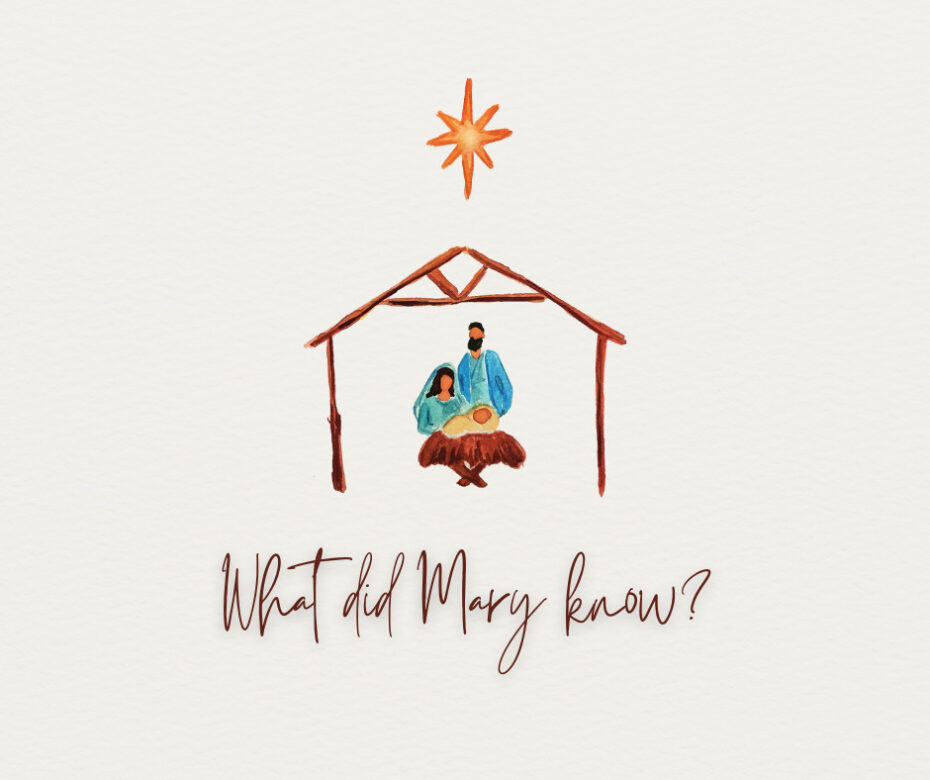It’s Christmastime, which means that most of us are once again reading the Biblical accounts of the Lord’s birth. As we think about these accounts, many of us will turn our gaze to Mary, the mother of Jesus.
As a general rule, there is an overemphasis and even a glorification of Mary at Christmas. The Catholic church, in particular, puts a lot of emphasis on Mary. While Evangelicals don’t see her as an intercessor, even we may think of Mary as being practically omniscient by assuming that she had knowledge of certain theological truths.
However, when reading the narrative in Luke 2, we see a different perspective. In this chapter we encounter Mary three times, and these encounters paint her in a different light than we might traditionally envision.
The first encounter is recorded in verses 9-18. Angels appear to a group of shepherds, who in turn go to see the Baby. The shepherds then go out proclaiming everything they have heard and seen. As the shepherds go out to proclaim the news, Luke tells us:
Mary kept all these things and pondered them in her heart (v 19).
The word pondered here means considered something or gave careful thought to it. The NET Study Bible says this about the word:
The term sumballousa suggests more than remembering. She is trying to put things together here [emphasis added].
Like a person working on a puzzle, Mary is depicted as trying to put all the pieces together. It’s clear that Mary didn’t fully understand what she was seeing and hearing from the shepherds. However, she meditated on what they had said and tried to understand its significance. Like any faithful student of God’s Word, Mary didn’t fully comprehend what she was shown, but she studied it and pondered its meaning (Ps 119:15, 25-27; Acts 17:11; 2 Tim 2:15).
In the second encounter with Mary, Luke’s narrative jumps to the temple. Mary and Joseph are offering two doves as a sacrifice. While there, they meet a man named Simeon. He tells the couple many incredible things. He speaks of a future time when all people, including Gentiles, will worship God (Luke 2:31-32). In light of this information, Luke tells us:
And Joseph and His mother marveled [emphasis added] at those things which were spoken of Him.
Once again, Mary is not portrayed peacefully sitting in serene understanding. She and Joseph are shocked by this new information. Certainly, Mary knew that the nation of Israel would be delivered by the Messiah (Luke 1:54-55). But the idea that Gentiles would also be brought light and revelation was unexpected. One could argue that she should have known (Gen 12:2), but obviously, she did not.
Constable writes:
Mary and Joseph understood that Jesus was the Messiah. However, they had evidently not connected some of the Old Testament revelation about Messiah to which Simeon referred with Jesus’ ministry. Perhaps they understood Messiah to be mainly a political leader, as was the view of most of their contemporaries. God used a stranger to inform them of their Son’s significance for the Gentiles (Tom Constable, www.Bible.org).
In short, Mary didn’t understand everything regarding the Child to whom she had given birth. She had previously spoken of the deliverance of Israel, but she had no idea of the blessings the Lord would bring to the Gentile nations. The example here is one of ongoing growth as she is shown new information.
The third encounter with Mary takes place a few years later. Following His family’s journey to Jerusalem to celebrate Passover, Jesus–still a child–had stayed behind to teach in the temple. When His parents realized that He wasn’t in the group traveling back to Nazareth, they returned to Jerusalem and, after some searching, finally located Him (Luke 2:41-45). In verses 48-50 we are told what happened when Mary found Jesus:
48 So when they saw Him, they were amazed [emphasis added]; and His mother said to Him, “Son, why have You done this to us? Look, Your father and I have sought You anxiously [emphasis added];”49 And He said to them, “Why did you seek Me? Did you not know that I must be about My Father’s business?” 50 But they did not understand [emphasis added] the statement which He spoke to them.
Once again, Luke provides an interesting description of Mary. She is amazed and anxious and is oblivious to the ministry of Jesus at the temple. We are told point-blank that she did not understand what Jesus was telling her about His ministry.
Looking at these accounts, we can learn many things from Mary. She was obviously a believer. She understood that a Messiah who gives eternal life was coming. She also knew that Jesus was this promised One who would redeem the nation of Israel.
However, she also had a lot to learn. She didn’t understand the significance of the events surrounding the Lord’s birth. She understood neither the impact He would have on the Gentiles nor His ministry at the temple. There were a lot of theological gaps in Mary’s understanding of Jesus and His earthly ministry. That said, the Lord still used her to accomplish great things. Mary was a poor, seemingly insignificant, imperfect person. Despite all this, she is a wonderful picture of a profound Scriptural truth: God does great things with humble people.
We do Mary a disservice when we make her into a 21st-century scholar. She didn’t have all her theological ducks in a row. She didn’t understand everything she saw, or even experienced. What a comfort it is to know that, despite her deficiencies, God still used a poor teenager from Galilee to be the mother of our Lord Jesus Christ. Despite her imperfect knowledge, she was still able to glorify the One who knows everything. He can do great things with us as well.
Merry Christmas!

